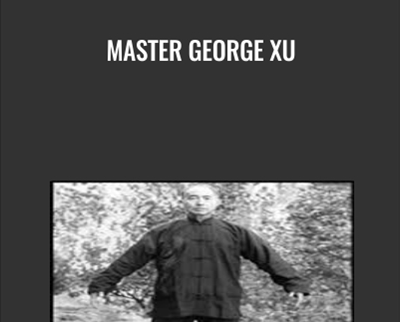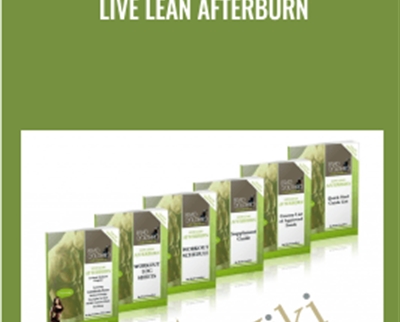
At-Home Flexibility Video Course – Yoga Body
Original price was: $39.95.$9.00Current price is: $9.00.
At-Home Flexibility Video Course – Yoga Body Download. If you have stiff hamstrings, locked-up hips, and a painful lower back; if youve tried yoga and str…
Salepage link: At HERE. Archive: http://archive.is/wip/TUYQC
If You Have 15 Minutes per Day, I Can
Double Your Flexibility in the Next 4 Weeks…
Unlock Your Hamstrings, Hips, and Spine with Targeted Training
Video: Flexibility is not genetic, and you don’t need years to develop it.
How flexible do you want to become?
Did You Know…
- Most yoga poses demonstrate rather than develop flexibility
- Nutrition plays a huge role in your body’s response to stretching
- A whopping 50 percent of your flexibility gains come from your nervous system, not your muscles
- When it comes to flexibility, teachers often practice different poses than what they teach you in classes
If you have stiff hamstrings, locked-up hips, and a painful lower back; if you’ve tried yoga and stretching exercises, but didn’t see many results, then there’s a very good chance I can help you.
My name is Lucas Rockwood, and I’m now a yoga teacher and teacher trainer, but I used to be a stiff office worker who couldn’t even touch his toes—not by a long shot. I tried yoga classes, at-home videos, and read a half-dozen human anatomy books, but nothing worked. Every day, I suffered through your typical stretching exercises, convincing myself it was worth it, but I wasn’t getting results.
When you’re stiff, it feels like you’re trapped in your own body. Since you’re reading this today, maybe you can relate to that stuck feeling in yoga, during the other physical activities you love, or even when you’re simply trying to sit cross-legged on the floor.
Before I discovered Gravity Yoga, I had the mobility of someone in his 70s (yet I was in my early 20s). People tend to get stiffer as they age, obviously, but I couldn’t imagine losing any more mobility, so I became determined to find a solution.

Top Benefits of Functional Flexibility
Most students I work with today are frustrated because they have lost their basic range of motion, such as the ability to bend forward at the hips, squat down deeply, and clasp their hands behind their back.
By the time most people reach adulthood, not only have they stopped playing like a kid, they’ve lost the functional flexibility required to squat and lift a box or a child from the floor, hang from monkey bars, cross their legs while sitting on the floor, and move freely in their favorite sports.
The good news is you can regain your lost flexibility (and often much, much more), and the benefits you’ll experience go way beyond the yoga mat. Here’s why flexibility matters:
-
Less Athletic Injury. Let’s be clear: tight muscles don’t cause injuries, poor movement patterns do. When you’re tight and imbalanced, your body creates work-arounds that get you into trouble. For example, people with tight hips and hamstrings often externally rotate their hips and swing their legs when they walk or run. People with tight psoas muscles often sway their back and stick out their bum. People with tight shoulders are often in a constant hunch. These imbalances lead to lower back, neck, and knee injuries, among others.
The number one reason people stop running, going to the gym, or doing the activities they love is because they get hurt and lose momentum. Once you stop exercising, many people never get back to it. The good news is that with an intelligent self-care flexibility training regimen, you can move toward a balanced body and reduce your risk of injury for life.
-
Reduce Back, Neck, and Body Pains. Joint pain, muscle soreness, and cramping can be reduced (and even eliminated) with intelligent mobility training. Your body is designed to express itself with a wide range of motion, and the more you tap into those natural patterns, the more the aches and pains of sedentary life fade. Many are surprised to learn that lower back pain is often a result of tight hip flexors, that neck pain can be due to locked-up shoulders, and that their hamstrings can trigger dozens of aches in the body.
-
Be More Active. Whether you’re passionate about yoga, skiing, mountain biking, or just being able to throw a frisbee around in the park, when your body is open and limber, everything works and feels better. Movement becomes fun again.
-
Improved Circulation. Many people assume heart strength is the only factor affecting circulation, but this is an oversimplification. Your body’s vascular system is huge and its capillaries are so vast and so tiny that they are constantly affected by your movements (or lack thereof).
Since stiffness is often systemic, the tightness in the backs of your legs could indicate you have impaired circulation to your extremities and connective tissues. Flexibility training unblocks stuck areas and helps to naturally improve whole body circulation.
-
Travel in Comfort. A huge part of the discomfort you experience from long car and airplane rides is due to poor mobility. When you regain your natural flexibility, it becomes easier and more comfortable to sit for long stretches of time—and yes, even cross-legged on the floor (that was always a huge one for me).
-
Improved Sleep. Muscle cramps, poor posture, and abnormal breathing patterns can be greatly reduced with proper pre-bed stretching exercises. Many find that with just 15 minutes of Gravity Yoga before bed, they sleep deeper and wake up refreshed.
-
Tone Your Nervous System. When your nerves are blocked by shortened tissues, it can physically impair the free-flow of electrical energy throughout your body. Conversely, when you increase your flexibility, you turn your body into a superconductor for energy. This can improve proprioception everywhere, but the most profound benefits are often experienced in the hands, feet, wrists, and shoulders.
-
Better Love Life. There is no need to explain how flexibility can help in this department; you can use your imagination.

My Story: I Was Embarrassingly Stiff
I remember going to a crowded party in New York City in 2002. There were no chairs left so my friend suggested we sit on the floor—and why not? Sitting on the floor is a perfectly normal human thing to do, except that, like most people, I had not sat on the floor since elementary school.
This is where it got ridiculous.
The girl I was with was an avid yoga student, so she flipped one leg on top of the other sitting in Lotus position as if it were the easiest thing in the world. But me? My hips were so tight, I couldn’t sit on the ground without my knees bent up to my chest and my back curled up like Quasimodo.
After 10 minutes, I was literally sweating in discomfort, red-faced, and embarrassed. It was so obvious I was suffering that a guy sitting nearby started teasing me about my tight hips. It sounds like a small thing, but it was a moment of truth for me. I realized I had let myself go, and I needed to do something about it.
I was 23 with the flexibility of a 73-year-old, and my stiffness was affecting my life. That night, I did some ad hoc self-tests at home to see just how stiff I was. I started by checking my profile in the mirror, and right away noticed my standing posture was horrible. I had lower back pain while driving, sitting on airplanes, and at work in my office chair—I constantly had to get up and walk around to work out the kinks in my neck. I was not fit by any means, but I did go to the gym and workout. All I did was ride an elliptical and lift on some weight machines, but I was still getting minor injuries.
When I bent forward, my hands reached just halfway down my shins; I couldn’t reach my ankles, much less my toes. Backbends were out of the question, and my hips felt like two big blocks of ice. All that aside, I knew that there had to be a way to fix this. I knew this was a soft tissue problem—not a bone problem—so I set out on a mission to find a solution.

It’s Not Too Late
Ask yourself, “What if first thing in the morning, I could bend over and put the palms of my hands flat on the floor in a forward bend?”
What if you could sit cross-legged with no back support for an hour in the middle of a room without any discomfort? What if you could twist 180 degrees, do a full backbend with your arms straight, and clasp your hands behind your back in a shoulder stretch?
All of those movements sounded impossible to me during my flexibility crisis, but I now know that they are basic movements that can be relearned by anyone who is willing to set aside 15 minutes a day for flexibility training and add specific micronutrients to their diet to support their tissues. Proper flexibility training and proper nutrition are where you’ll find the biggest results.

Why Yoga Classes Often Fail (for flexibility)
There is a stereotype that yoga classes are all about flexibility, but that’s almost never the case. Most classes focus on strength, balance, breath, concentration, and the mind-body connection. Flexibility is surely on the list, but it’s usually at the bottom of the list of priorities in most classes.
I didn’t know that, so I became a yoga maniac going to class every day. The other students seemed pretty limber, so I thought it was logical to sign up for a membership. Much to my surprise, after weeks of suffering through classes, I hadn’t achieved noticeable results.
Don’t get me wrong, I loved yoga. I felt more calm, my balance was improving, and I was even losing weight; but I was still as stiff as a board and didn’t see that changing anytime soon.
Then I met this weird guy named Anthony.
Anthony was my age and attended classes with me at a Hot Yoga studio in Soho in New York City. Anthony and I started out with the same sized bodies and the same ability (which was actually no ability), but after just four weeks, Anthony was on fire.
He was losing weight really quickly and getting strong and flexible while I was lucky to make it through the standing series without getting queasy and falling over. And in terms of my stretching flexibility? Forget it, I wasn’t getting anywhere.
In yoga class, you’re supposed to stay focused, but I couldn’t help staring. After six weeks, Anthony could lay flat against his shins in forward bends, cross his legs in full lotus, and go three times as deep as I could in backbends. He had leaped from beginner to intermediate extremely quickly. Whatever he was doing, it was working; and what I was doing clearly wasn’t.
Finally, I had to say something.
After two painful months of Hot Yoga torture (I was going every day), I finally got up the nerve to invite Anthony for pizza after class (this was before I learned how to eat properly for flexibility). Anthony reluctantly agreed, and although he didn’t eat anything during our meeting, he did tell me three secrets to stretching flexibility that I later learned are true for almost everyone.
Anyone Can Become ‘Wow’ Flexible
What most people would consider extreme flexibility—Splits, Full Lotus, Wheel pose—is actually just natural range of motion. If you doubt this, spend an afternoon with any six-year-old kid and you’ll realize that we were all naturally flexible, we’ve just lost it. The ‘wow’ factor shouldn’t be a wow at all. It should just be normal, but we’ve all let ourselves get to a ridiculous state of inflexibility, where basic tasks, such as bending over, involve stretching.
You Don’t Become Flexible Going to Yoga Classes
This was a real eye-opener for me. I used to think yoga was all about stretching and flexibility, but Anthony taught me that most yoga poses demonstrate rather than develop flexibility. “Yoga is a holistic health practice,” he told me. “If you’re stiff, you don’t need yoga. You need to stretch!”
After struggling through daily yoga classes for two solid months, this was the last thing I wanted to hear, even though I knew it was true from experience. Despite all my efforts and commitment, my stretching flexibility had barely improved at all.
Pizza Makes You Stiff
Well, not just pizza, but nutrient-poor food in general. Anthony told me, “It’s possible to eat junk food and improve, but if you want to increase your stretching flexibility fast, you need to eat better and take care of your micronutrients.”
He said, “To think that if you stretch more you’ll become more flexible is like saying if you eat less, you’ll lose weight. In theory, this is true, but in the real world, it just doesn’t work like that. To lose weight, you’ve got to eat right, and to get flexible, you’ve got to stretch right and get proper nutrients.”
I could tell Anthony was getting sick of my questions, but before he left, he wrote down a series of awkward yoga poses that he claimed he practiced every night before bed for about 15 minutes. He also made me a list of nutritional supplements—most I had never heard of before.
What Anthony was doing seems so simple to me now, but at the time, it was mind-blowing. Here’s a quick summary:
- Long-hold, passive stretching for at least 15 minutes before bed
- Breathing in a specific way to train the nervous system
- Eating whole foods, mostly plants
- Taking a specific stack of supplements to aid in connective tissue health
Gravity Yoga
Complete At-Home Flexibility Training in 15 Minutes Per Day
Designed for yoga students, athletes, office workers, and busy parents, this is a step-by-step, five-day-per-week routine you can do before bed to systematically help you regain your functional flexibility.
FREE Bonuses ($97.85 Value!)
(included in all package options)
Pose Chart (PDF)
Normal price: $9.95 FREE!
Print this out or simply access it from your phone or computer for quick reference in your daily stretches. Many people find that after a while, they still use the videos, but sometimes they just grab this handy pose chart.
Format: Online PDF report
Yoga Breathing Guide (digital)
Normal price: $9.95 FREE!
Yogic breathing is extremely effective for waking you up, balancing your nervous system, or putting you to sleep—but most yoga breathing books and teachings are complicated. In this short PDF guide, you’ll learn about ‘Water,’ ‘Whiskey,’ and ‘Coffee’ breath for taking control of your nervous system. No experience required, fast and safe to learn at home.
Format: Online PDF report
Warm-Up Moon Squats Video (digital)
Normal price: $9.95 FREE!
From Moon Squats to Bow and Arrow, these stretching warm-ups will warm up your ankles, knees, hips, and shoulders. These dynamic stretches are perfect for getting you ready for your run. Follow Lucas Rockwood in this easy yet effective pre-workout you can do anywhere.
Format: Online PDF report
30-Days of Stretching Coaching! (private message w/Lucas)
Normal price: $69.95 FREE!
As a Flexibility Kit owner, you’ll get 30 days of unlimited questions with Lucas via direct message on Instagram. Have questions about a specific pose? Need a modification or extra help? Just ask. We’ll get back to you, usually within 48 hours—and the other students will help, too.
Format: Instagram direct messages
100% Satisfaction Guarantee
If for any reason (or no reason at all), you are unhappy with this program, simply send it back for a full, hassle-free refund anytime within the first year. There is no catch or complicated process to go through. We stand behind all our products unconditionally, so you can try out the program risk-free and decide for yourself.
The Nervous System & Yoga Connection
Anthony developed his approach to supplemental flexibility training after seeing a series of doctors who attempted to treat a nerve condition, which sometimes caused his entire right side to go numb. It was a weird condition that no one could figure out.
The doctors were not able to cure the nerve problem, but along the way, Anthony was introduced to some of the very interesting nutrition research and movement practices for nervous system health.
I didn’t know this then, but as much as 50 percent of your flexibility is determined by your nervous system—not your muscles!
“Don’t get me wrong,” Anthony told me. “Yoga has done me more good than seven specialists’ treatments combined, so keep going to class. But if you want to improve your flexibility, do these extra stretches every night, skip the pizza, and try some of the nutritional supplements I wrote down for you.”
My Life as a Yoga Guinea Pig
That night, I went online and ordered a dozen different supplements that Anthony recommended. Some were really hard to find and had to be shipped in from overseas. Others were pretty common, but I discovered massive differences in cost and quality. All in all, it took about three weeks before I had everything I needed to get started, but once I got going, I never stopped.
I followed Anthony’s flexibility training program exactly as he instructed. It really only takes 15 minutes per day, and you do it right before bed so it’s easy to fit into your schedule. I began eating a plant-based diet and supplementing with the micronutrients Anthony recommended, and the results came very quickly.
In less than 30 days, I added six inches onto my forward bend, slid my legs into full lotus for the first time (just barely), and even practiced Wheel pose with straight arms.
In the office, people used to laugh at me when I bent over to pick a pen up off the ground—I was always “that stiff guy,” but using Anthony’s simple system, I doubled my stretching flexibility, and it felt amazing, like adding an extra room onto my house.
And it didn’t stop there.
Imagine waking up in the morning and being able to fold forward completely flat against your legs. What if your lower back was loose, limber, and pain-free all the time? What if your hips were open enough so you could sit on the floor with your legs crossed without any discomfort?
Flexible people sleep better, suffer from fewer injuries, build lean muscle more easily, dance better, and have higher self-esteem. Plus, bendy people are better at sports, and they’re even better in bed.
Here’s what I’ve learned.
There are two types of people: those who have always been limber and those who can’t even touch their toes without their hamstrings screaming out and their lower back igniting with pain. Since you’re reading this, I’m guessing you’re in the second category, like I was, but the good news is you can get back to your natural state.
When I started using this system, I noticed changes in a matter of days, and within a month, other people could see my body transforming. Within a year, I felt like I had an entirely new body. And the best part is, since 2007, I’ve now helped over 51,000 people double, triple, or even quadruple their flexibility using this same method.
Why Nutrition Matters
There’s a reason why bodybuilders eat loads of protein and endurance athletes suck down sugary gels—it makes them better at their individual sports. Almost every movement practice in the world has a preferred diet, but the traditional yoga diet of bread, milk, beans, and rice is a total disaster for health and flexibility.
In an ideal world, it would be great if we all ate a perfectly balanced, micronutrient-dense diet and drank spring water loaded with minerals. But we don’t. Micronutrient deficiencies are more common than not since the advent of mass agriculture because mass-produced food is synonymous with low micronutrient food.
Food today is grown for calories and taste, not nutrients. Earth’s soils are abused to the edge of infertility, and the result is that we have an abundance of foods that are loaded with calories but light on micronutrients. I’m talking about vitamins, minerals, phytonutrients, enzymes, and all kinds of other compounds we’ve yet to discover or fully understand.
For yoga students, the micronutrients are what really matters.
These micro or ‘small’ nutrients are essential for the health of your body’s connective tissues. Sulfur, magnesium, vitamin C, and essential fats, for example, are crucial for soft tissue health. Flexibility training is subtle energy work and highly demanding on your body. A protein shake or an energy gel is not ideal for yoga students. Green juice, sulfur-rich vegetables, omega-3s, vitamin C laden fruits… these are the foods of yoga students.
Gravity Yoga: Long-Hold, Passive Stretches
When I first started stretching, I wish someone had told me that muscles stretch best when they are relaxed. It seems obvious now, but I’d never thought it through. This concept is essential if you’re serious about increasing your flexibility, so I’ll say that again: muscles stretch best when relaxed.
This means when you’re in the middle of a dynamic movement, whether running or doing Warrior I, it’s very unlikely your soft tissues will lengthen. It can happen, but it’s a very slow process and much less effective than when you’re completely relaxed. Gravity Yoga involves long-hold, timed poses in a completely passive position.
Here’s why this matters.
If you’re looking to transform shortened tissues (tight hamstrings, locked up hips, stiff shoulders), your flexibility training must include passive, long-hold stretches with appropriate breathing to turn off your nervous system’s stretch reflex. We want your body like a wet noodle. You want to turn on your parasympathetic nervous system, and then gently lengthen your soft tissues.
This is so effective that within five minutes, you’ll see and feel a dramatic difference in your range of motion from your first session. Within a week, you’ll have made lasting changes, and within 30 days, your body will look and feel noticeably different in a variety of poses.
Here are the fundamentals of Gravity Yoga:
- Long-hold poses are essential to turn off your stretch reflex and gently lengthen your soft tissues while disengaged
- Nose-to-mouth breathing with a 1:1 or 1:2 ratio down-regulates your nervous system and allows your body to soften
- Flexibility training should be done after any other type of exercise and ideally, before bed because you never want loosen joints before a workout
- You must ‘meet or beat’ your passive stretch hold times daily to incite change, otherwise your body will naturally come out of poses before any lengthening happens
My most successful Gravity Yoga students practice for 15 minutes a day, right before bed. All you need is enough space to roll out a mat, a stopwatch (use your phone), and you’re ready to go. There is nothing magical or mystical about this practice, so if you want to stretch while you listen to music or watch your favorite show, go right ahead.
NOTE: Gravity Yoga has nothing in common with warm-up stretches, dynamic or ballistic stretching you probably learned in physical education class as a kid. This is intense, measured flexibility training that targets specific areas of the body, and you’ll immediately feel the difference.
Your five-day flexibility training schedule:
Monday
- Hamstrings
- 2 yoga poses
Tuesday
- Hips
- 2 yoga poses
Wednesday
- Shoulders
- 3 yoga poses
Thursday
- Back
- 3 yoga poses
Friday
- Wrists, Twists, Ankles
- 3 yoga poses
Here's an overview of the prominent keywords and a list of famous authors:
Business and Sales: Explore business strategies, sales skills, entrepreneurship, and brand-building from authors like Joe Wicks, Jillian Michaels, and Tony Horton.
Sports and Fitness: Enhance athleticism, improve health and fitness with guidance from experts like Shaun T, Kayla Itsines, and Yoga with Adriene.
Personal Development: Develop communication skills, time management, creative thinking, and enhance self-awareness from authors like Gretchen Rubin, Simon Sinek, and Marie Kondo.
Technology and Coding: Learn about artificial intelligence, data analytics, programming, and blockchain technology from thought leaders like Neil deGrasse Tyson, Amy Cuddy, and Malcolm Gladwell.
Lifestyle and Wellness: Discover courses on holistic health, yoga, and healthy living from authors like Elizabeth Gilbert, Bill Nye, and Tracy Anderson.
Art and Creativity: Explore the world of art, creativity, and painting with guidance from renowned artists like Bob Ross and others.
All the courses on WSOlib are led by top authors and experts in their respective fields. Rest assured that the knowledge and skills you acquire are reliable and highly applicable.
User Reviews
Only logged in customers who have purchased this product may leave a review.

Original price was: $39.95.$9.00Current price is: $9.00.











There are no reviews yet.